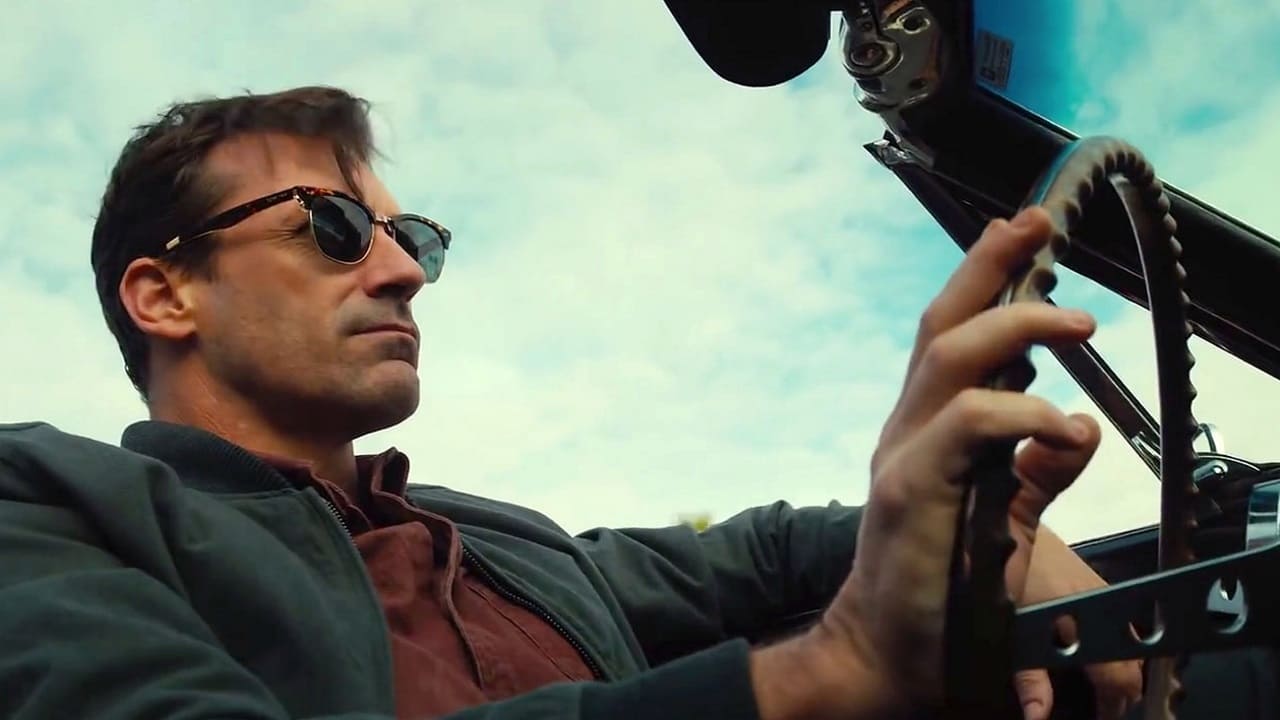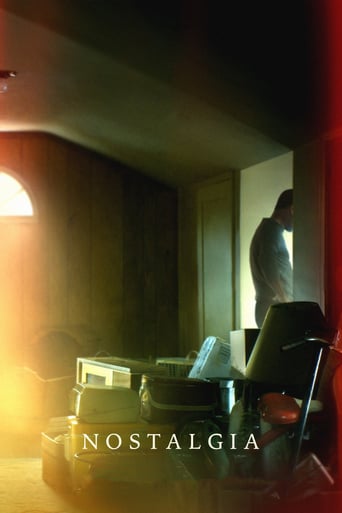

Well this was just a bit depressing wasn't it? I'm all for nostalgia, but this sure isn't what I think about when it comes to pulling up past memories. I try to reserve that for the warm, comforting moments that lend resonance to a person's life. Even something inspirational that might have occurred in the past that glows with fondness over time. So I'm not sure what the film maker was trying to do here. To be sure, there were some defining moments in the picture, as when the insurance adjuster (John Ortiz) stated to some clients - "Every story has details I've never heard before". And two very emotional scenes had exceptionally well written dialog; one was between Helen (Ellen Burstyn) and the memorabilia shop owner (Jon Hamm), the other occurred in the diner between crash survivor Kathleen (Mikey Madison) and the parents of Tallie (Annalise Basso). But gee, having the young teen die in a car accident seemed like an awful way to frame a story about nostalgic moments. More than anything, I felt bad for mother Donna (Catherine Keener) who initially nixed the road trip that ended in her daughter's death, and then relented when it became apparent that Tallie had no inclination to hang around with her Mom and Uncle Will. Now Donna would be left to contemplate her measure of blame in Tallie's death, even if irrational.On top of all that, it was quite apparent that the scriptwriters did no homework at all regarding that Ted Williams signed baseball. The figure cited by Will the shop owner was in the range of eighty to a hundred thousand dollars, and his phone conversation with another collector hinted at a reasonable profit for him upon resale. But all it takes is a quick internet search to reveal that a similar ball sells in the neighborhood of three hundred fifty to four hundred fifty dollars. They're just not that rare, no matter how pristine the condition. Internet auction sites will suggest more, but usually in conjunction with other famous player autographs as well. But the kicker for me personally in this story was the name of that insurance guy who opened the story with Ronnie Ashmore (Bruce Dern). His name was Daniel Coleman in the story, and the reason it's so poignant is because I knew a Daniel Coleman from my hometown who died years ago as a young adult from leukemia. That's a bit of nostalgia that depressed me even more as this picture unfolded.
... View MoreThere were moments when I thought this was a film about eyes as they communicate emotion. Sadness, compassion, confusion, frustration, and so on.This is a difficult subject, how to handle the physical articles - or lack thereof - of a loved one after their passing. I, my siblings, and my mother's sisters went through this with my 97 year old grandmother's effect six months ago, so my grief at her passing is still fresh. It was often agonizing. So many random moments of laughter, tears and memories. Yet, life goes on and decisions have to be made. This film is respectful of this process. Not for everyone, true, but definitely one to re-visit at those times in your life when you so-so-so need to know you aren't alone in your feelings of loss and the need to move on.
... View MoreOne of the few films that have hit me so hard recently. It's as if the writers reached into my brain and heart. I had Such a visceral reaction. Excellent performances by a superior group of actors. I'd give a 20 if I could!
... View MoreCasting Jon Hamm, with his "Mad Men" iconic persona adding much to the role, in "Nostalgia" was the best decision made by the movie's writer and director. Otherwise, they seem to have fumbled the ball.This morbid look at how people become attached to the objects accumulated in a "life lived" to quote the show's most moving term is loaded with arbitrary and contrived connections that attempt to link individual story vignettes into a cohesive whole. With the absence of action, which is what moving pictures are really all about (I learned that early in my formative movie buff years watching foreign films from around the globe without English subtitles as a crutch), we are left with a cold, gloomy movie.First half is quite promising, with an unusual central character played by John Ortiz. He's an insurance investigator, visiting people either inheriting a home or possessions or those in a position to bequeath same. He doesn't appraise but checks out the scene and gives advice on getting an appraiser for example. And he's about as welcome as a coffin-maker in a Western doing body measurements on somebody before they go out to have a gunfight.Ortiz' character reminded me of Marvin Miller in "The Millionaire" TV series, one of my favorites as a kid growing up in the '50s. Miller would give a check for a million bucks made out by the enigmatic (never shown) J. Beresford Tipton to a seemingly random person, and we in TV land would watch for half an hour how the moolah would change that person's life.Opening scene elegantly establishes the movie's main theme, as Ortiz sits in a diner admiring waitress Shinelle Azoroh's necklace, which she reveals is a treasured family heirloom. He goes to the home of Bruce Dern to check out his lifelong accumulation of stuff, and octogenarian Bruce is cavalier about the importance or value of it, clearly not wishing to play Ortiz's game. We see that Bruce has an estranged pregnant daughter who doesn't care about him, and the film suffers from our not finding out anything about Dern's character, other than gazing at various photos of the actor in his youth, circa his screen breakthrough so long ago in Hitchcock's "Marnie". Next up Ortiz interviews Ellen Burstyn amid the ashes of her burnt-out home. She survived a fire but only had time to save some jewelry and a baseball (signed by Ted Williams, hint, hint) that her late husband treasured. She's now living with her kid and mate, and clearly they feel she's just a burden to them, so she heads to Las Vegas to have the ball appraised. At this point Ortiz disappears from the movie, never to return, and I missed him as potentially the central character and unifying force.Burstyn's expert acting makes her vignette work dramatically, but she too is given short shrift as we meet Jon Hamm, running a sports memorabila store (and expert in the field), who informs her in cliched Antiques Roadshow fashion that the ball is worth perhaps $80,000 to $100,000. Ellen was never directly attached to it, now only treasuring it as a connection to her late husband, so she sells it to him. No matter that it is clear Hamm is cheating her to some extent (could be worth a million bucks perhaps?), he takes over the movie from here to fadeout.SPOILER:Not to be outdone, Catherine Keener as Hamm's older sister provides the emotional punch in the later reels, where a contrived plot twist has Hamm moving from uninvolved spectator (a la the Ortiz role early on) to "shoe is on the other foot" deeply involved protagonist when tragedy strikes his family on cue. Writer Alex Ross Perry and director Mark Pellington (whose thriller "Arlington Road" packed the wallop missing from "Nostalgia") key the show to objects and artifacts, but as a lifelong collector (from baseball cards, to philately, to ultimately valuable Jazz LPs) I found this morbid approach to be off-point. One can be nostalgic over the ephemeral, namely memories just as mine of "The Millionaire" came rushing back without material objects to prompt them. Similarly, for all the assiduous accumulation of Jazz albums over the years, it is the memory of the artists performing live, and getting to meet and even interview them, that linger with me rather than the collection itself - Hamm in the attic examining Rollins and Coltrane LPs left there by his dad drove home that point specifically. Even if the auteurs are ultimately arguing (it's questionable given the emphasis on loss, as in a key scene comparing the ephemeral nature of photos stored in the Cloud via smart phone and lost, compared to tangible and treasured snapshots retained the old-fashioned way) the obvious point of memories of a life lived being so much more important than mere talismans of same, the movie fails to deliver that message forcefully.
... View More